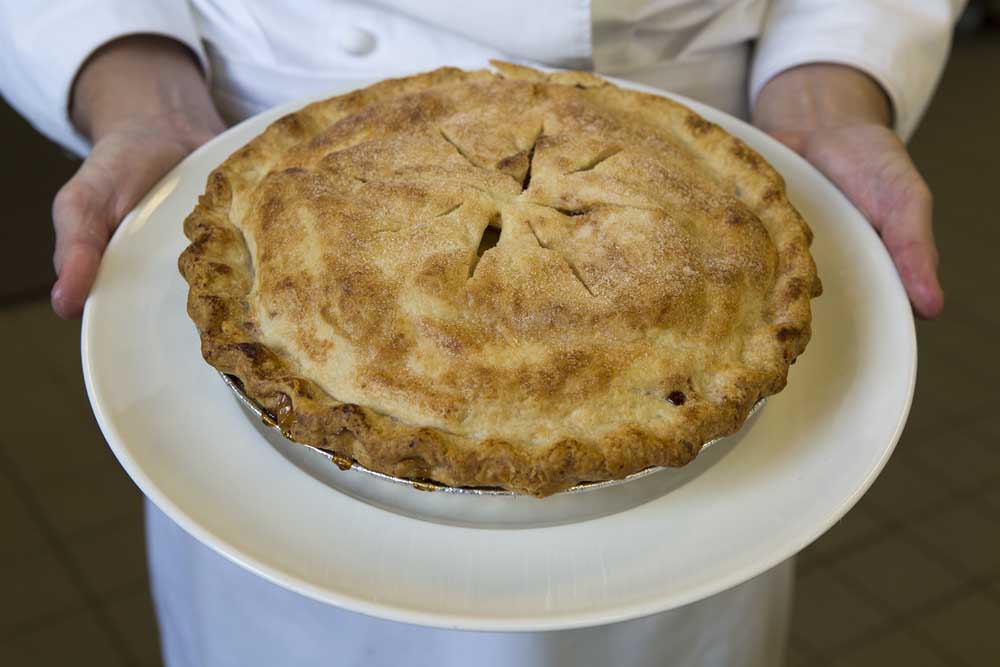Janet Stevens column: ‘Desperation pies’ have long history
Published 9:36 pm Thursday, December 28, 2017

- (Bulletin file photo)
We had pie for dessert on Christmas night, although it wasn’t apple, berry or pumpkin. Instead, we had one of my dad’s favorites, a pie I hadn’t tasted in nearly 50 years. Cream pie, as it’s called at my house, is about as simple as a pie can be, just a pie crust, cream, sugar, nutmeg and flour.
My dad loved it. It was an old family dessert in a family that ran a dairy and loved desserts. My mother was far less taken with cream pie, which she often said tasted like and had the consistency of library paste. In fact, Mom disliked the pie so much that when she included it in a cookbook she wrote, the cooking instructions were simply to bake the pie until done. End of story.
Trending
I do think, however, that had Mom known a bit more about the pie, she might have been more impressed.
Cream pie, it turns out, goes by a variety of names — sugar pie, Canadian sugar pie, Hoosier sugar and cream pie among them. The recipes are not identical, but all rely on sugar and cream and a thickener, with not much else, for a filling.
They’re part of a category of pies called “desperation pies,” I discovered (where would the world be without Google?). Desperation because they were the pies families generally made when apples, berries and other fruits were not available.
I can remember reading the recipe for Ritz cracker mock apple pie on the back of the cracker box as a kid. The cracker came to markets in 1934, in the middle of the Depression, and the Ritz cracker pie was not far behind. Its filling combined lemon-flavored syrup and Ritz crackers in an era when apples were too often costly and hard to find. Judging from an article in a 2009 issue of the Seattle Times, it may have looked and smelled like apple pie — it was seasoned with cinnamon, after all — but a modern audience didn’t think it tasted like apple pie.
Another mock apple pie featured green tomatoes and apple pie spices.
Nuts, too, could be replaced. The Amish created an oatmeal pie that relies on oatmeal to replace pecans. It was developed in the South during the Civil War, when pecans were hard to find but oatmeal was plentiful.
Trending
Then, there’s mincemeat pie, one of the oldest of the desperation desserts. Its roots go back at least to the 11th century, when making mincemeat allowed families to preserve meat in an era of no refrigeration. It combined meat, usually beef or venison, with dried fruits, apples, suet (beef fat), spices and a preservative liquor, usually brandy or rum. My mother’s recipe featured venison.
Another pie of desperation is something called vinegar pie. Hankering for a lemon meringue pie but out of lemons? This is the pie for you. It was created in an era when lemons, while available in large cities, were hard to come by and very expensive everywhere else. The pie is a kind of vinegar custard made with sugar, eggs, vinegar and water.
Other desperation pies include shoofly pie, which had its origins in the Amish and Mennonite country of Pennsylvania. Featuring molasses and brown sugar, it has a well-deserved reputation for being one sweet pie.
As for my family’s cream pie, it traces its roots back to what is Indiana and a Shaker community there. At least one recipe for sugar and cream pie, its official name, was found that’s dated 1816, making this an old pie, indeed.
It’s as easy as it is old, by the way: Make a pie crust and refrigerate it, stir filling ingredients together (2 cups heavy whipping cream, 6 tablespoons flour and a half-teaspoon of nutmeg), put them in the crust and bake in a 450-degree oven for 10 minutes; reduce heat to 350 degrees and bake another 30 minutes. It comes from the oven a lovely shade of brown, and, Mom notwithstanding, it’s delicious. Not good for you maybe, but tasty.
— Janet Stevens is deputy editor of The Bulletin. Contact: 541-617-7821, jstevens@bendbulletin.com








